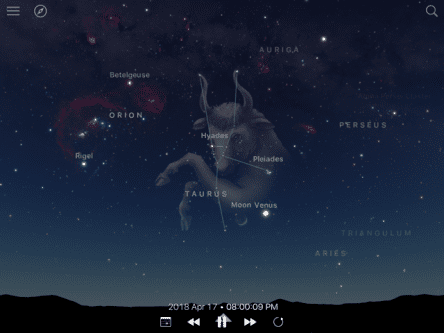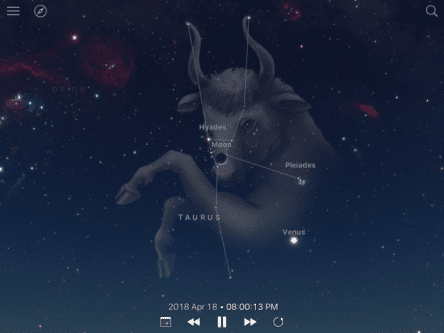Highlights of the April Sky 2018


• April 2 – The first photograph of the Sun was taken on this day in 1845. The daguerreotype image from the early days of photography was taken by French physicists Hippolyte Fizeau (1819-1896) and Léon Foucault 1819-1868). The 5-inch image showed many details including a few sunspots that are estimated to have been about as wide across as the planet Jupiter.

April 3 –
Soviet spacecraft Luna 10 becomes the first to orbit the moon.

April 7 – Look for a waning moon just 1 or 2 degrees above Saturn in the dawn sky. Look for the Red Planet Mars just a few degrees away from Saturn towards the southeast.
April 8 – At 12:31 A.M. CDT, the moon is at apogee, its most distant point away from Earth for the month, at a distance of 251,123 miles.

April 11 – Apollo 13 was launched on this date from the Kennedy Space Center, FL with
Jim Lovell as commander, Jack Swigert as Command Module Pilot, and Fred Haise as Lunar Module Pilot. The lunar landing mission had to be aborted when an oxygen tank exploded two days into the trip. The story of how the astronauts were able to return home safely has been told many times but perhaps none better than in the book, Apollo 13 (aka Lost Moon: The Perilous Voyage of Apollo 13), by Jim Lovell. The story is also told in the Ron Howard film, Apollo 13, starring Tom Hanks, Kevin Bacon, Bill Paxton, Gary Sinise, Ed Harris, and Kathleen Quinlan.
April 15 – New moon occurs at 2:18 A.M. CDT.

April 17 – The waxing crescent moon will be just 5 degrees away from the bright planet Venus in the early western evening sky (five degrees is the width of your fist held out at arm’s length). This will be a lovely view so be sure and step out to take a look.
The planet Saturn is at aphelion, its most distant point in its orbit from the Sun, at a distance of 936 million miles, at around 6:00 A.M. CDT.

April 18 – The waxing crescent moon is now located amid the Hyades star cluster in the constellation of Taurus.
April 20 – The moon is at perigee, its closest point in its orbit around the Earth, at a distance of 229,108 miles, at 9:41 A.M.
April 22 – The peak of the Lyrid meteor shower (NOTE: See our April Feature article for more details). Best viewing will be from midnight to the predawn hours.
April 29 – Full moon occurs at 7:58 P.M. CDT
April 30 – Look for the almost full moon to be just 6 degrees to the east of bright planet Jupiter this evening.
